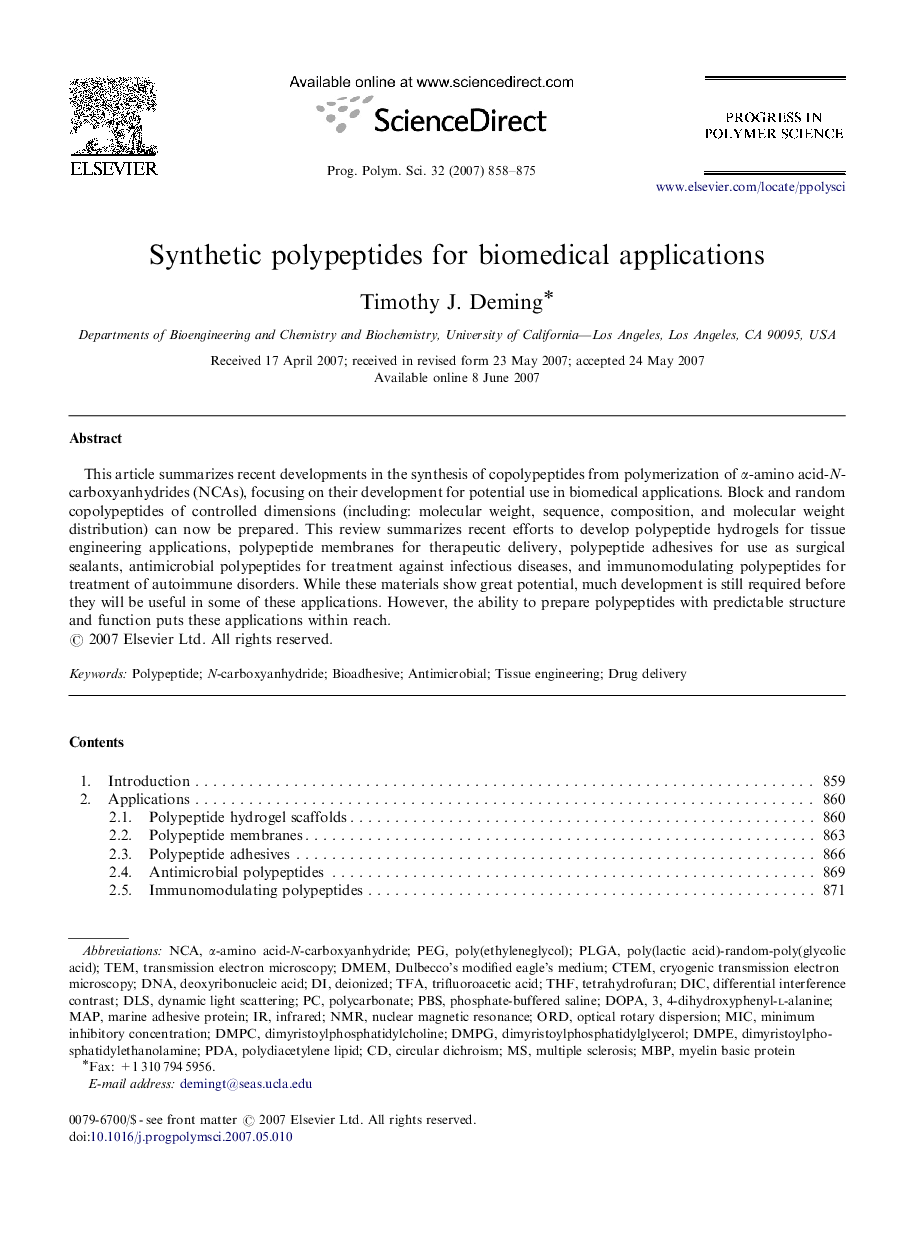| Article ID | Journal | Published Year | Pages | File Type |
|---|---|---|---|---|
| 5209009 | Progress in Polymer Science | 2007 | 18 Pages |
Abstract
This article summarizes recent developments in the synthesis of copolypeptides from polymerization of α-amino acid-N-carboxyanhydrides (NCAs), focusing on their development for potential use in biomedical applications. Block and random copolypeptides of controlled dimensions (including: molecular weight, sequence, composition, and molecular weight distribution) can now be prepared. This review summarizes recent efforts to develop polypeptide hydrogels for tissue engineering applications, polypeptide membranes for therapeutic delivery, polypeptide adhesives for use as surgical sealants, antimicrobial polypeptides for treatment against infectious diseases, and immunomodulating polypeptides for treatment of autoimmune disorders. While these materials show great potential, much development is still required before they will be useful in some of these applications. However, the ability to prepare polypeptides with predictable structure and function puts these applications within reach.
Keywords
MBPCTEMDimyristoylphosphatidylglyceroldimyristoylphosphatidylethanolamineDMPEDMPGdimyristoylphosphatidylcholineNCAdMPCTFADOPAMICPLGADICPDATHFPBSDLSDMEMdeionizednuclear magnetic resonanceDNADulbecco's modified Eagle's mediumdeoxyribonucleic acidTrifluoroacetic acidTemBioadhesiveTetrahydrofuranDrug deliveryNMRMinimum inhibitory concentrationcircular dichroismAntimicrobialInfraredPhosphate-buffered salineTissue engineeringMultiple sclerosisCryogenic transmission electron microscopyTransmission electron microscopymapN-carboxyanhydrideORDDynamic Light ScatteringMyelin basic proteinPoly(ethyleneglycol)PolycarbonatePolypeptidePEGdifferential interference contrast
Related Topics
Physical Sciences and Engineering
Chemistry
Organic Chemistry
Authors
Timothy J. Deming,
